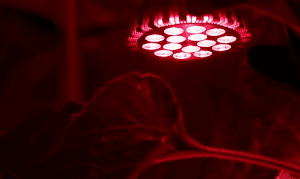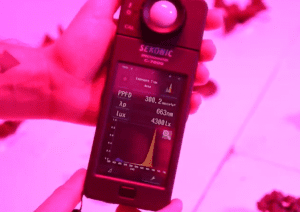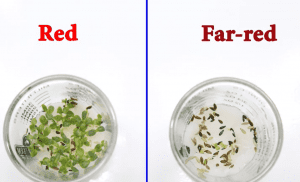In the past, we talked about strong photosynthesis, blue and red. There are mainly two kinds of blue. We also talked about strong photosynthesis. Not only can photosynthesis be carried out, but red plays a big role in photosynthesis, but It also played a big role. Today it is a red light. Just as blue light can offset green light and red light can offset high light, the balance of the two has a huge impact on plants. In this issue, I will focus on red lights, but I will not talk about red lights. This is impossible because they have a lot of such interactions, so the reason for doing so is because the balance between red and far red has a huge impact on the way plants germinate.
For some crops, germination is reversible, just like lettuce absorbs red plant pigments. Depending on the color of the light emitted when the recipient emits red light, red light can promote or inhibit germination. Promote the process of germination. , But when it looks red, it can reverse the process, and even become much more complicated than the original, so it may first see red, then see a faraway red, and then sprout, because, in fact, you can reverse this The process, or you can see red, then red, then red, then sprouting, so in fact, the most important thing is the last color of the grow light it sees, even if it is really darkened. Dimming, if it is red, it will turn to red or red, if it appears, it will be very far red and will not be sown to regulate germination. This is just one of many photoreversible reactions caused by plant pigments. Plant pigments also regulate a series of other functions, from seeds to flowers, from increasing red to increasing blue, which can increase the elongation of the stem, as we have seen on this basic substrate, and receive more here. Many red dots. The surface is higher than the bottom surface. Compared with blue, increasing the amount of red can increase the size of the leaf.
ch We can see this kind of lettuce here, the lettuce was grown here has a higher red/blue ratio, and the leaves are much larger, and then over there, you can see the stem height and leaf size are red and light. Some practical applications of agricultural red light, so it is very suitable for manipulation. As we saw in the second episode, during the photoperiod, some other practical uses of red light and agricultural products are to increase red relative to Farrell to reduce stem elongation or decrease. Me, this will be shown in the next clip. Growth is usually only photosynthesis, and indeed many grow lights are very good at providing red light. Red LEDs are the most efficient LEDs and are more efficient than white or blue LEDs, so you can create a whole beam of light with lower electricity bills and then use high-pressure sodium lamps.
Lamps are also the main source of red light. They can provide a lot of power. I have seen many effects here. As the red color increases, you will also see it under a high-pressure sodium lamp. Now, some double-ended high pressure sodium lamps are sometimes HPS double-ended. Abbreviation for high pressure sodium, they are even more effective when emitting red light. I really like to grow green leafy vegetables under the big red spectrum. Just like I use this kind of LED to guide this kind of LED plant grow light with the adjustable spectrum, I increase the amount of red, or as seen under the high pressure sodium lamp, then increase the red. This is the red that makes me really like the beautiful big leaves on the head of lettuce. This will also affect the texture. In many red lettuces, these beautiful soft leaves are very delicate and soft. Compared to what I got from there, it is beautiful, there are a little thick leaves there, some people like its thickness, I like softness, I like this beautiful Softlettuce feels so good on my face.
- ۰۰/۰۱/۳۱


